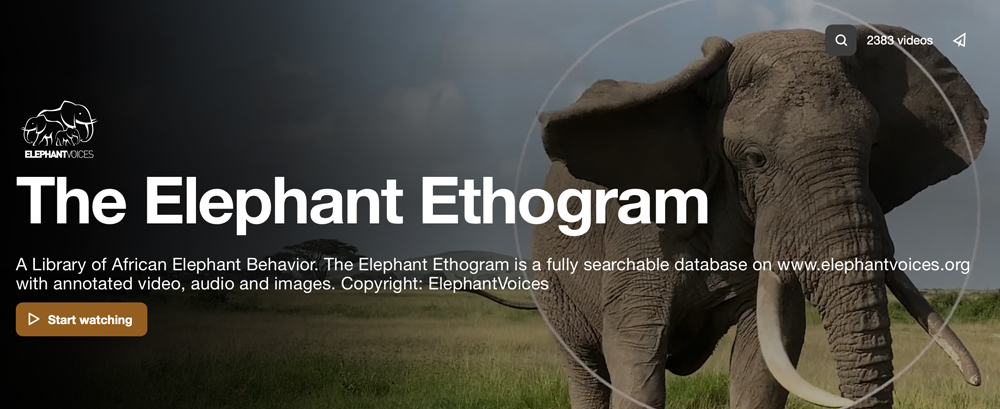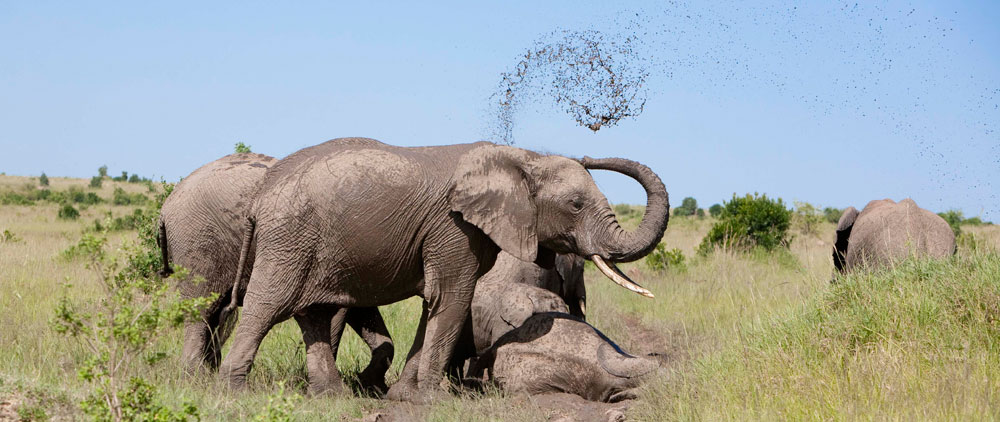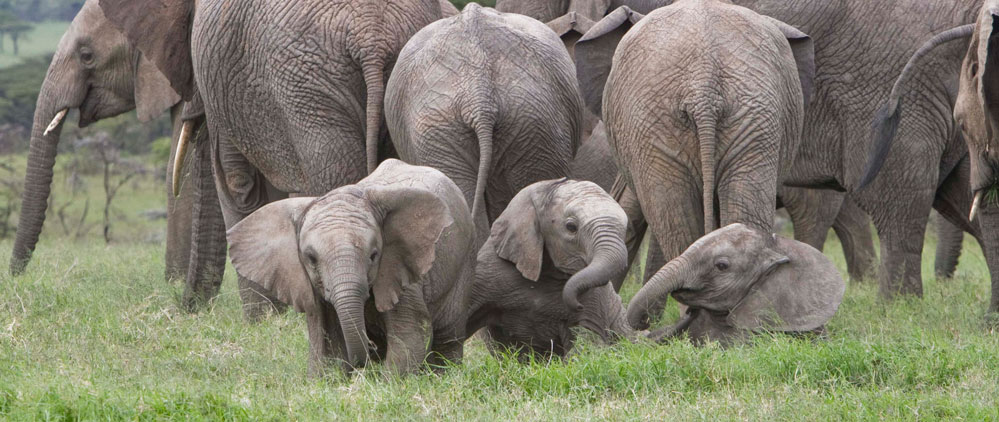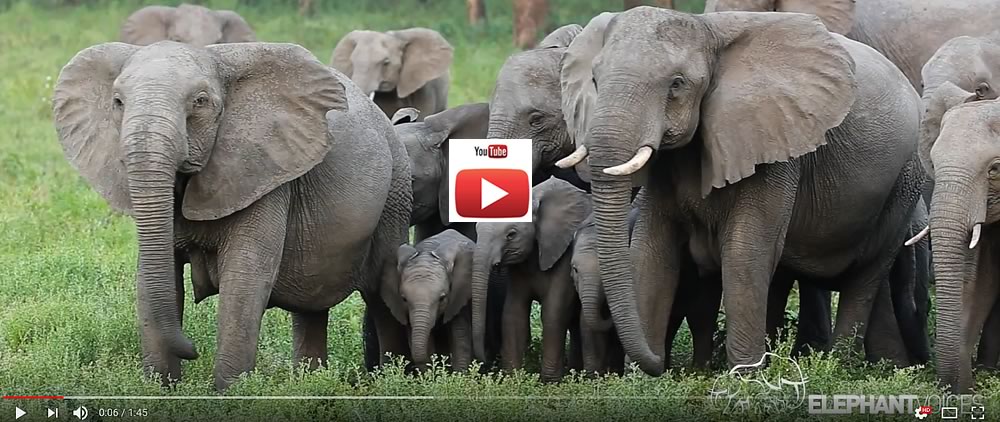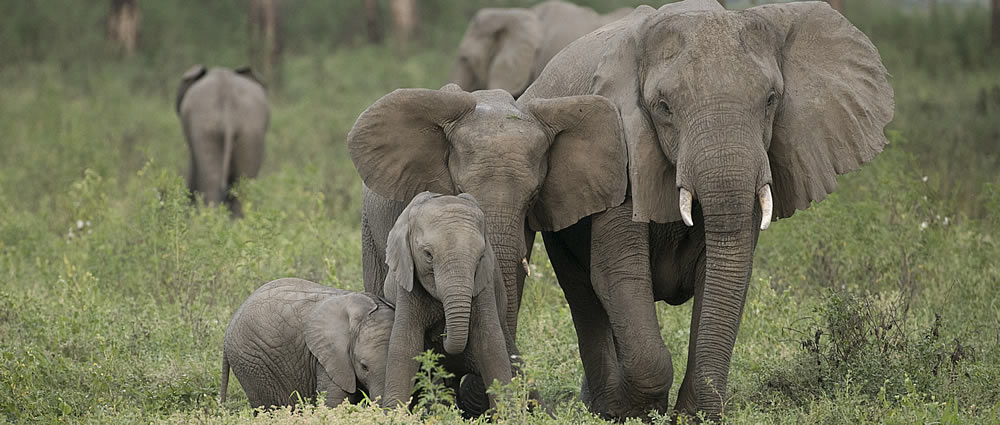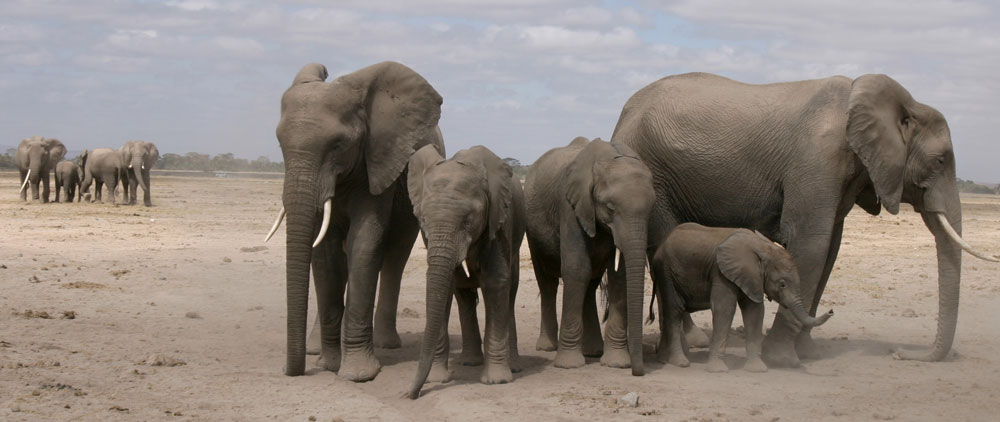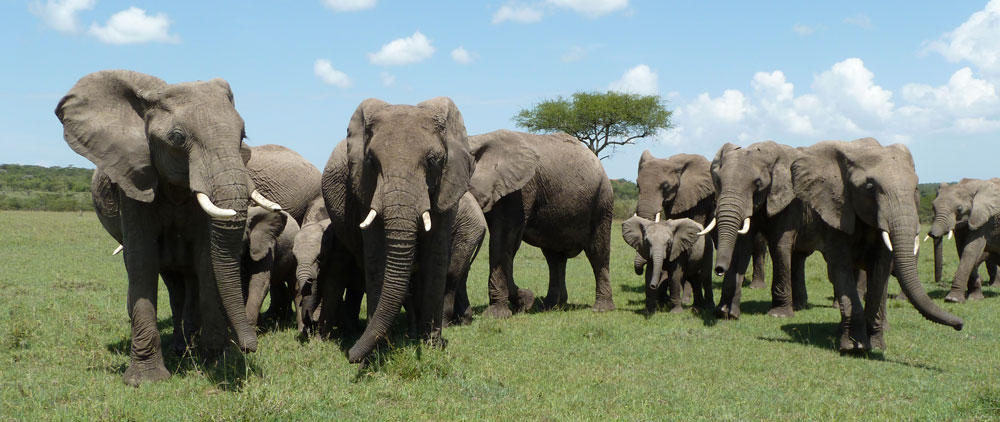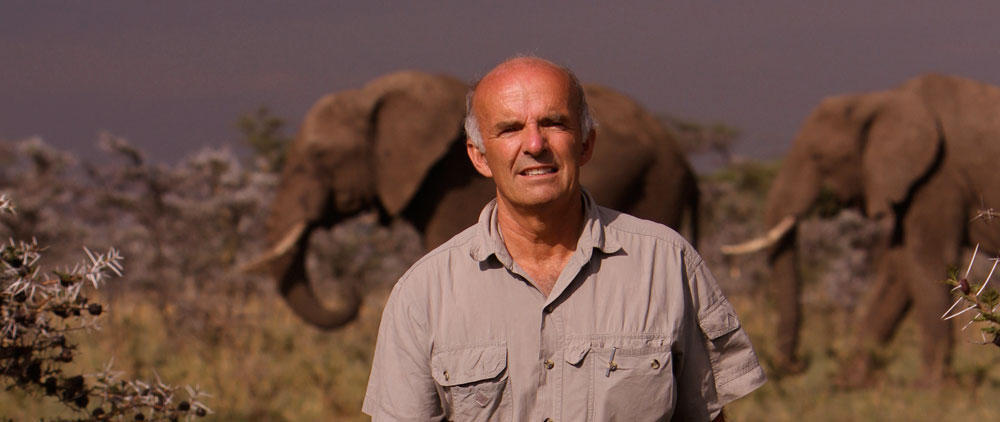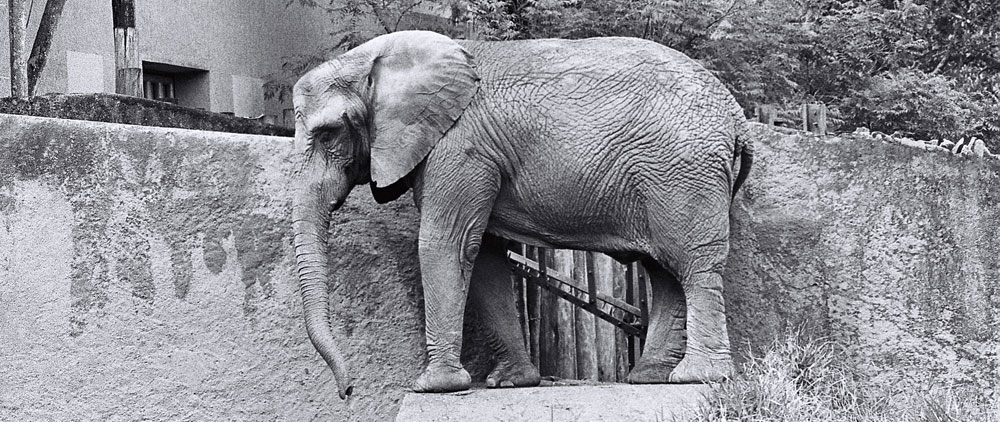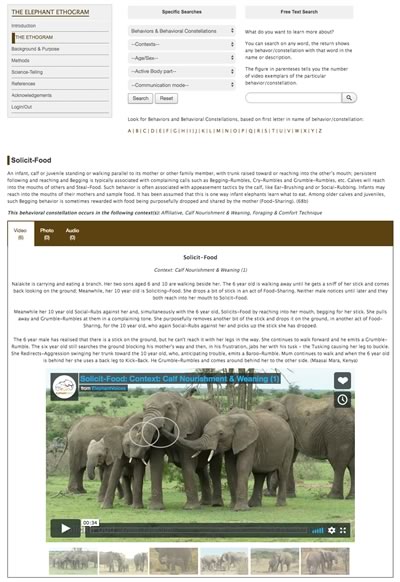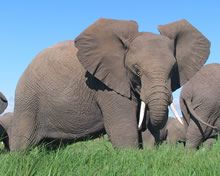the elephant ethogram
-
Chemical communication
The use of chemical or olfactory cues is central to communication between elephants. Elephants often raise their trunks up to sniff scents carried in the air, or use the tips of their trunks to explore the ground (especially urine spots, urine trails and fecal matter) as well as to sniff the genitals, temporal glands, or mouths of other elephants. Chemical communication provides an energetically efficient and long-lasting signal.

 Sources of odours used in chemical communication between elephants include urine, faeces, saliva and secretions from the temporal gland, a large multi-lobed sac with an orifice mid-way between the ear and eye.
Sources of odours used in chemical communication between elephants include urine, faeces, saliva and secretions from the temporal gland, a large multi-lobed sac with an orifice mid-way between the ear and eye.Elephants may also use secretions from the tarsal or Meibomian glands and interdigital glands in communication, and they are frequently observed with secretions from the ears which are also likely to convey information.
Sense of smell
Elephants have a keen sense of smell
 and just as we use our sight an elephant makes use of her sense of smell constantly. When we want to learn more about what an elephant is thinking or where her attention is directed, we look not at her gaze (as we would with a person), but at the tip of her trunk. The tip of
and just as we use our sight an elephant makes use of her sense of smell constantly. When we want to learn more about what an elephant is thinking or where her attention is directed, we look not at her gaze (as we would with a person), but at the tip of her trunk. The tip of -
How elephants communicate
Like all highly social mammals elephants have a well-developed system of communication that makes use of all of their senses - hearing, smell, vision and touch - including an exceptional ability to detect vibrations.
 Acoustic communication takes a look at sound production and hearing in elephants; chemical communication explains how elephants use various secretions and their acute sense of smell to communicate; visual communication looks at how elephants make use of postures and displays and their sense of sight in communication; tactile communication describes how elephants make use of their sense of touch to communicate.
Acoustic communication takes a look at sound production and hearing in elephants; chemical communication explains how elephants use various secretions and their acute sense of smell to communicate; visual communication looks at how elephants make use of postures and displays and their sense of sight in communication; tactile communication describes how elephants make use of their sense of touch to communicate.At one end of the spectrum elephants communicate by rubbing their bodies against one another, at the other end they may respond by moving toward the sounds of other elephants calling, perhaps 10 kilometers away. They convey information about their physiological (e.g. sexual/hormonal, body condition, identity) and emotional state (e.g. whether they are fearful, playful, joyful, angry, excited) as well as communicating specific "statements" about their intentions or desires. In this section we look at how elephants use the different pathways of communication and the actual mechanics of communicating.
You will in the fully searchable database The Elephant Ethogram: A Library of African Elephant Behavior find close to
-
Introduction
The Elephant Ethogram is a uniquely detailed catalogue, or library, of the behavior and communication of African savanna elephants (Loxodonta africana). It is based on decades of ElephantVoices behavioral studies, photographs, and audio and video recordings, the referenced research of other elephant biologists, as well as professional and amateur footage made available to ElephantVoices. You can read more about how elephants communicate within this section of elephantvoices.org. The Elephant Ethogram was launched in May 2021.
 The Elephant Ethogram consists of written and referenced descriptions, video examples, photographic illustrations and, where relevant, audio recordings, of 322 Behaviors, 103 Behavioral Constellations and 23 Behavioral Contexts. There are close to 3,000 media files in the fully searchable Elephant Ethogram including 2,408 video clips (18 August 2021).
The Elephant Ethogram consists of written and referenced descriptions, video examples, photographic illustrations and, where relevant, audio recordings, of 322 Behaviors, 103 Behavioral Constellations and 23 Behavioral Contexts. There are close to 3,000 media files in the fully searchable Elephant Ethogram including 2,408 video clips (18 August 2021).The concept and structural design of The Elephant Ethogram was developed by Joyce Poole and Petter Granli of ElephantVoices. Programming and database maintenance is handled by Derrick Joel, Nairobi, Kenya in collaboration with Petter. The Elephant Ethogram is coded in open source software PhP and MySQL in Joomla! CMS, and is hosted on Cisco servers as a section of elephantvoices.org. Video and audio is hosted on Vimeo and SoundCloud, respectively.
What is an Ethogram?
An ethogram is a comprehensive list, inventory, catalogue or description
-
Launch of The Elephant Ethogram
Dear ElephantVoices friend,
The Elephant Ethogram: A Library of African Elephant Behavior is live! We are very excited with the results of this massive, multi-year effort and hope to entice you with our science-telling. There are close to 2,400 educational video clips currently uploaded, each associated with detailed descriptions and stories. In addition, you will find more than 600 field recordings, spectrograms and images. The Elephant Ethogram is a culmination of Joyce's life’s work and it feels very satisfying to be able to share it with the world through the organization we founded together almost 20 years ago.
We officially launched The Elephant Ethogram on 25th May. Read National Geographic's interview with Joyce linked here. Forbes covered the launch with this article - and more media coverage will follow during the days to come. Going forward our ambition is to ensure The Elephant Ethogram will be an important resource used long-term in the best interests of both wild and captive elephants.
The Introduction page will give you some basic information about The Elephant Ethogram. The User Guide will help you find your way, with the Search Portal being the place for all kinds of searches. The Science section is for those especially interested
-
The Elephant Ethogram
ElephantVoices is working on a major initiative to document the repertoire of African savannah elephant behavior (Loxodonta africana). The Elephant Ethogram represents a unique and comprehensive source of information about elephant behaviour and communication, based on ElephantVoices' decades of behavioural study, our multimedia photographic and acoustic collections, as well as footage collected during the filming of documentaries from the Maasai Mara, Kenya, and Gorongosa National Park, Mozambique. The Elephant Ethogram describes and preserves the gestural and acoustic "language" and behaviour of a species whose way of life, and very existence, is threatened by human greed and expansion.
The first version of The Elephant Ethogram was made available on ElephantVoices.org in April 2021.
Purpose & Objectives
The Elephant Ethogram documents in a unique, user-friendly and fully searchable database, the complex and diverse communication and behavior of African elephants for scientists and others to study, compare and share. As a repository of exemplars of elephant behaviour, The Elephant Ethogram aims to:
- preserve the gestural and acoustic repertoire, or "language," of African savannah elephants;
- be a valuable resource and reference for scientific study;
- be a repository of rare elephant behaviors and those evolving through social learning in response to rapidly increasing anthropogenic threats;
- inspire increased interest in elephant behavior,
-
User Guide
This user guide is intended to help you explore The Elephant Ethogram and find the information you are looking for. Behaviors and Behavioral Constellations may be found by clicking on the links in the Ethogram Table or by using the Search Functions on the Search Portal. You can read more about how elephants communicate within this section of elephantvoices.org.
The Ethogram Table
The Ethogram Table is an overview of all of the Behaviors, Behavioral Constellations and Behavioral Contexts contained in The Elephant Ethogram. In the left column, we define 23 Contexts. In the middle and right columns we list the Behaviors and Constellations that occur in the different Contexts. Many Behaviors and Constellations occur in more than one Context. The number of video examples of a Behavior/Constellation in a particular Context are given in parentheses.
A click on a linked Behavior or Constellation will take you to where it is documented with a written and referenced description, one or more annotated video examples, and/or audio recordings. Audio recordings are also documented with a spectrogram, accessible through a link in the audio caption.
The Search Portal
There are four Search Functions on the Search Portal that return Behaviors and Constellations matching the search. Click on a linked Behavior or Constellation to read its description and to view the annotated video and/or audio examples.
-
Visual communication
For years naturalists have written about the behavior of elephants without realizing they were contributing to the beginnings of a foundation of knowledge about their visual communication. Many of these descriptions are part of popular language. For instance, people talk about an angry elephant "charging", "flapping its ears", "kicking up dust" or "tossing its trunk." In the course of their research early elephant ethologists, too, wrote about specific displays using words such as "the musth walk", "standing tall" or "trunk curling," to name but a few.
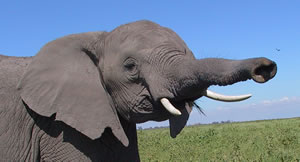 So how do elephants send visual signals? The answer in its simplest form is that they use their heads, eyes, mouth, ears, tusks, trunk, tail, feet and even their whole body to signal messages to one another and to other species. For example, a threatening or dominant elephant
So how do elephants send visual signals? The answer in its simplest form is that they use their heads, eyes, mouth, ears, tusks, trunk, tail, feet and even their whole body to signal messages to one another and to other species. For example, a threatening or dominant elephant  signals her status by trying to appear larger, carrying her head high above her shoulders, spreading her ears, climbing up a termite mound, while a subordinate elephant carries his head low and his ears back. An elephant who is fearful raises her tail and lifts her chin. A socially aroused elephant raises tail and her head, and lifts and rapidly flaps her ears.
signals her status by trying to appear larger, carrying her head high above her shoulders, spreading her ears, climbing up a termite mound, while a subordinate elephant carries his head low and his ears back. An elephant who is fearful raises her tail and lifts her chin. A socially aroused elephant raises tail and her head, and lifts and rapidly flaps her ears.


